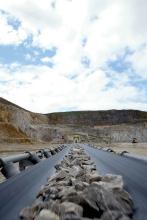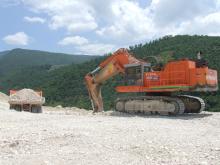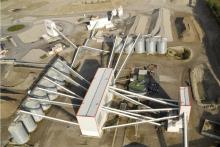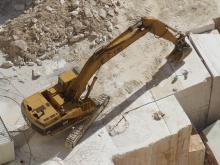
With a history already spanning 10 decades, one UK sand quarry is on the verge of securing its future for another 20 years. Claire Symes reports
Drive through the outskirts of the Kent town of Sevenoaks in the UK and your eye is caught by the distant North Downs, but the town is also home to one of the south east's largest sand quarries. Nestled out of sight is
The quarry has supplied material to some iconic building projects in London including the new centre court at Wimbledon, Canary Wharf and the Globe Theatre. Reserves at the site, which opened in 1924, are sufficient to enable it to meet the demands of the nearby 2012
Plans for expanding the site will deliver an additional 20 years of reserves, which will not only allow the quarry to continue producing construction sand but will also clear the way for restoration of the site to a wildlife and leisure park. "The site currently occupies 95ha with around 65ha open at the moment," explained Tarmac quarry manager Roy Sharrad. "The extension would allow us to open up another 14ha area within our land holding. Work on gaining permission started five years ago to ensure the plan offers the best approach for the environment, ecology and archaeology. The work has been designed to allow the site to be restored for the benefit of both environment and the local community." Sharrad has a real interest in seeing work at the quarry continue - both his father and his grandfather worked at the quarry and his stepson may also join the business. But his interest extends beyond extraction of sand at the site and it is clear the history of the site and its position within the local community holds a fascination for him.
"We have an extensive photographic archive for the site and lots of records," he explained. "When the site first opened it was operated by Jones, a brick manufacturer that used the Gault Clay at the site as well as extracting the sand. The quarry was bought by Tilcon in 1980 and later became part of Tarmac after
"When Tilcon took over there were around 80million bricks stockpiled here because construction methods had switched to larger blocks. In addition to the sand production, there was also a mortar plant and a high flow bagging plant." Today the site extracts sand from the Folkestone Beds - with 20m above the water table and 20m extracted from below. Tarmac uses contractors for primary extraction by excavators on both faces on a part time basis. The deposit above the water table varies in colour and has to be mixed by the wheeled loader operator at the face before loading onto the field conveyor that delivers it to the processing plant.
"We used to have our own drag line excavator for excavating below the water table but it is more efficient to use contractors. The old equipment was donated to Amberley Working Museum rather than scrapped, to ensure future generations can learn about older quarrying methods," said Sharrad. "We have also used a dredger in the past but it is easier to use a long reach excavator at the moment." From the conveyor, the sand passes into a shredder and then onto a Finlay 5mm screen before washing by the
Around 30% of the material goes into the modern onsite bagging plant - operated by Tarmac Building Products - that uses robots and automated systems to package over 300tonnes per day of building and plastering sand for the DIY market. Another 20% goes into the mortar plant and the remainder is sold to external customers for concrete or asphalt production, as well as to golf courses.
The site runs a small machine fleet - just one
To further improve its relationship with local residents, Tarmac invested £6million (€6.7million) in a new access road to the site, which included a new railway bridge and opened up potential for rail connections at the site. This new road meant that trucks collecting material from the site could then access the quarry directly from the main road.
The work at Sevenoaks may be screened from accidental view but the site certainly does not hide itself completely - a public footpath crosses the site and Tarmac has made every effort to ensure people can safely view the operation of the site from this route.
The quarry also has a special room dedicated for displaying plans for the extension and members of the public can view these at any time.
"We held an open day for people to come and view the plans and the site," said Sharrad. "But we are happy to take the time to talk to people about the development and most seem happy with the approach we are taking." While Sharrad and his team can't second guess the planners' decision on the extension, the absence of local objection to the scheme seems to go in the favour of another two decades of quarrying at Sevenoaks.









